The first pack of Pokémon cards I ever opened was from the original Base set, released in the UK during 1999. (You know the ones which now go for hundreds of pounds on eBay?) It was a gift from my Dad and fully defied my Mum’s ‘No Pokémon cards’ rule. While she had accepted my new-found obsession with its yellow mouse, she believed the cards were a waste of money since there was no guarantee which ones I’d get, and completing my collection involved buying an awful lot of packs. Unfortunately for us both, she was right.
Back then, my whole existence revolved around what treasures each Blastoise-decorated packet held. As soon as I ripped open that first packet, I was hooked. And yes, collecting trading cards is an expensive hobby. (These days, I focus primarily on collecting promo cards. I may never own property, but I will own a Black Star Venusaur eventually.) All of which is to say, if you haven’t gathered already, I’m a firm member of the target audience for Pokémon Trading Card Game Pocket, the upcoming mobile version of the Pokémon TCG, especially with its focus on collecting the cards themselves.
Pokémon TCG Pocket offers you the chance to open two booster packs for free every day and, having played it during this year’s Gamescom, I can happily say the process of opening packs is quite satisfying. It begins with selecting the design you wish the booster packs to have. In the case of Genetic Apex, the first card set for TCG Pocket, your choices are between three classic Pokémon – Charizard, Pikachu and Mewtwo. Afterwards, you’re taken to a circle of boosters where you scroll from pack to pack until deciding which one to open.


The catch, however, is you need to build up Pack Stamina to open packs – and this can take up to 12 hours. Let’s say you open your first pack at 8am, for example, which then means you can’t open your second until 8pm passes. This does create the worry you’ll miss opening your second daily pack either due to opening the first too late in the day or simply from forgetting. Want to avoid this by speeding up the process? Well, there’s an item which will do just that. You only need to spend some of your real world money on it, because TCG Pocket wouldn’t be a mobile game if there weren’t microtransactions – but we’ll get to those later.
TCG Pocket’s developers have succeeded in recreating the experience of opening a physical booster pack. Instead of simply having the cards automatically appear on screen, you need to drag your finger across the top of a virtual pack to rip it open. Just like how you might have done as a child! Afterwards, the cards are revealed one-by-one, requiring another finger swipe to move to the next card, allowing you ample time to inspect each one. The rarest card is, of course, the last one to be revealed. Yet, if you’d like to see it first, you can always flip the booster pack around before opening it. This causes the cards to appear backwards upon opening the pack, reversing their reveal order and needing you to turn them over too.
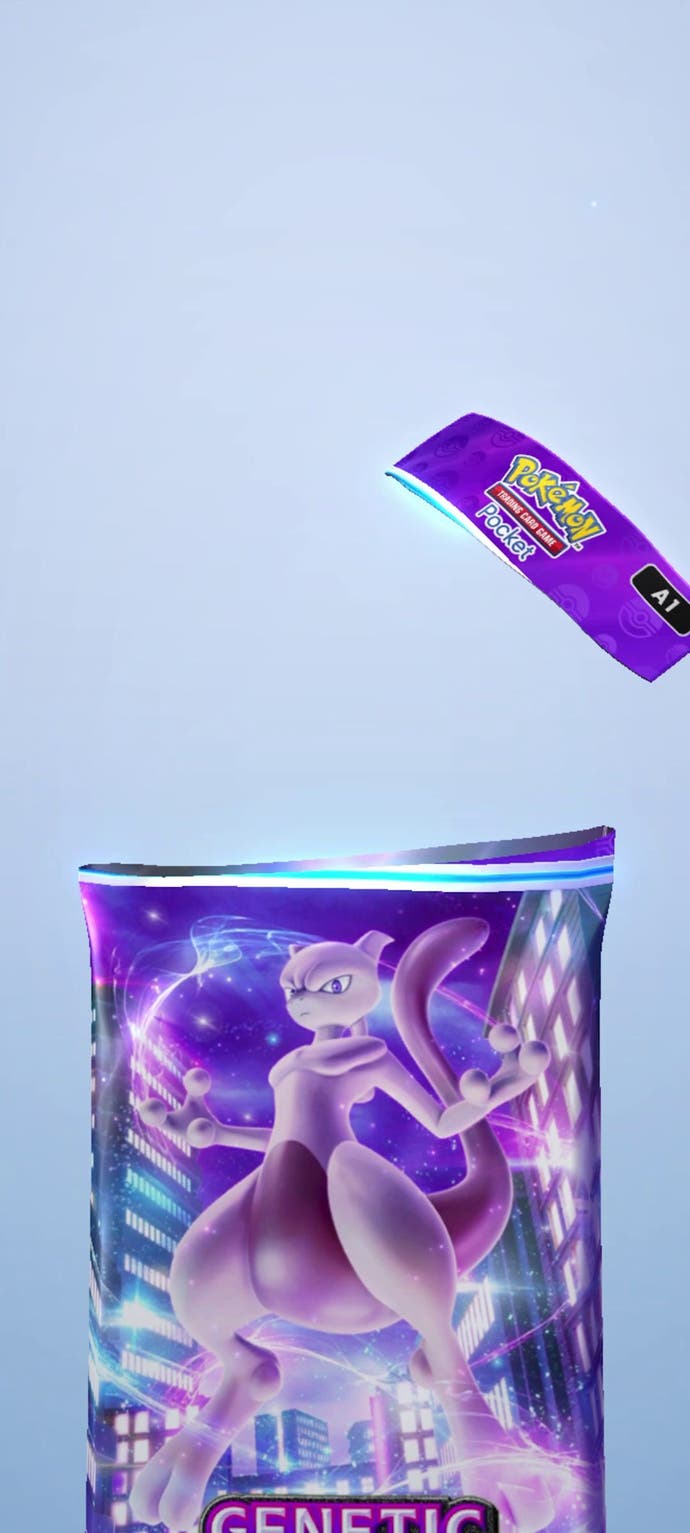

Opening packs, however, isn’t the only way you can collect cards in TCG Pocket. You’ll earn Pack Points every time you use Pack Stamina, which can be exchanged for specific cards. There’s also the daily Wonder Pick feature that allows you to pick a randomly selected card from another player’s booster pack haul – you may even find yourself collecting cards in another language. (This is a feat which can also be achieved from your daily booster packs if you change TCG Pocket’s language.)
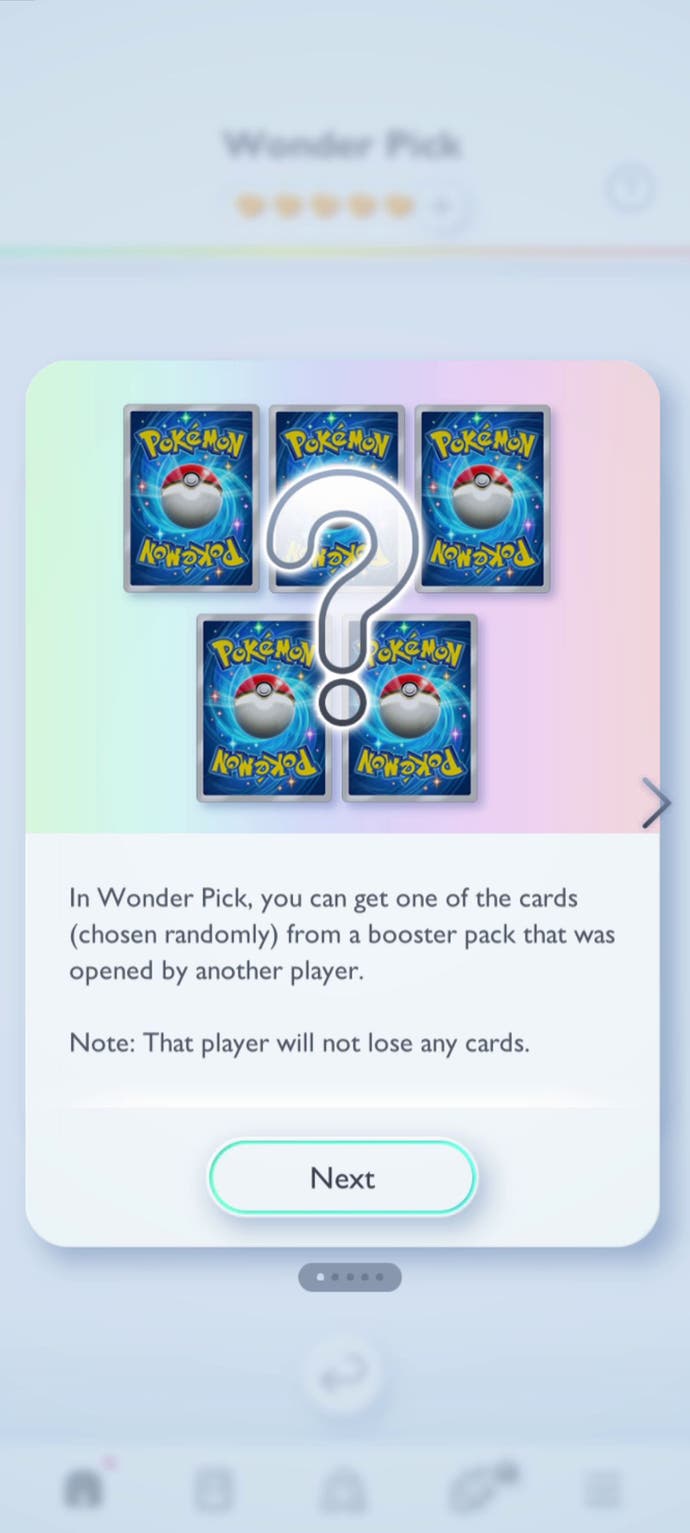
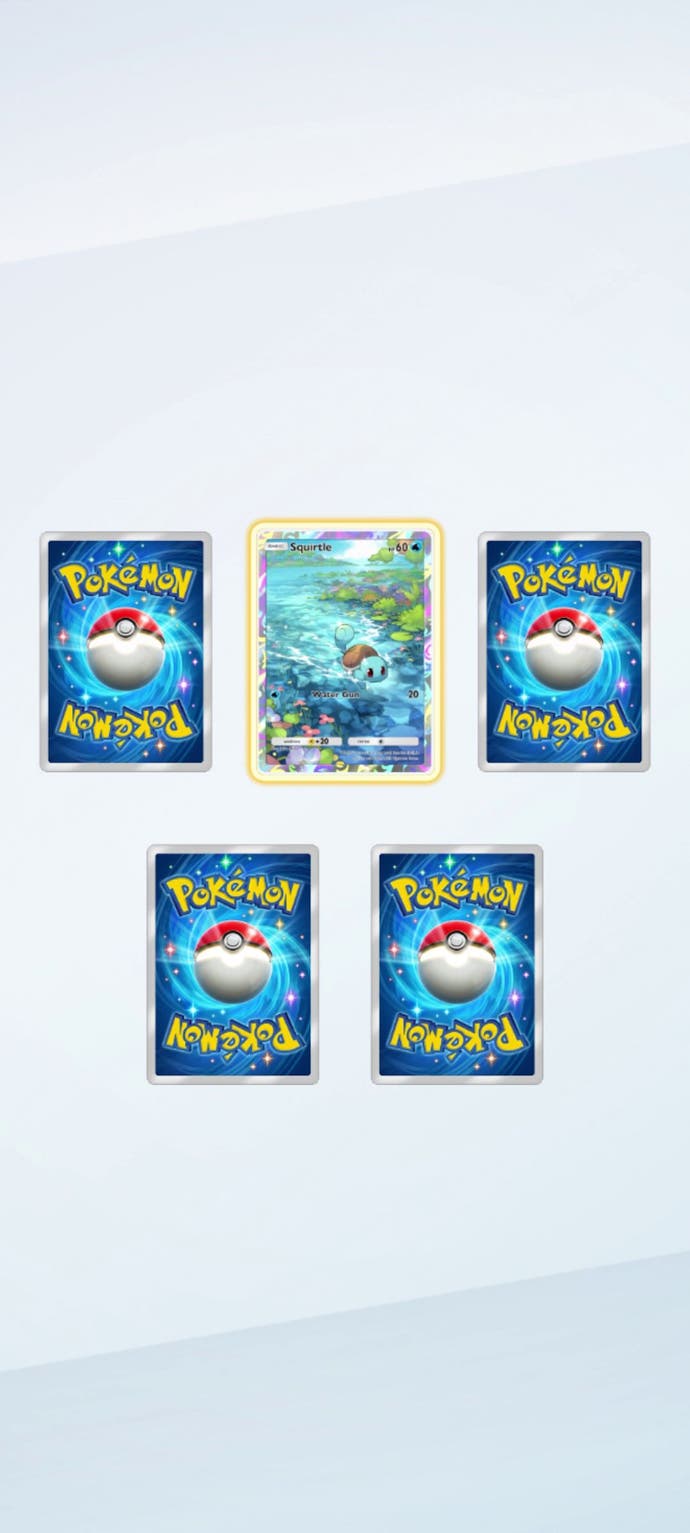
The cards themselves look great thanks to vibrant colours, with interesting designs and the ability to look at them from multiple angles. TCG Pocket launches with one set – the previously mentioned Genetic Apex, which includes a mixture of new cards created specifically for the game and returning favourites from past sets. Genetic Apex will only ever be available in TCG Pocket and there’s plans to release additional sets in the future. Still, Genetic Apex has enough cards to keep you busy, including powerful EX varieties and shinies.
TCG Pocket’s treasures, however, are the immersive cards. Not only do these cards give you something cool to show off, but they transport you into their world. Two immersive cards have already been revealed – one for Pikachu, one for Mewtwo – and each sends you on a little journey accompanied with music. Pikachu’s card takes you on a forest walk where you can spot other Pokémon like Ponyta, Butterfree and Weedle. While it hasn’t been confirmed, the setting looks a lot like Viridian Forest. Mewtwo’s immersive card, meanwhile, appears to show its escape from the lab where it was created. This extended artwork definitely makes these cards worth collecting, if you’re lucky enough to find them. At least TCG Pocket lets you check the pull rates…
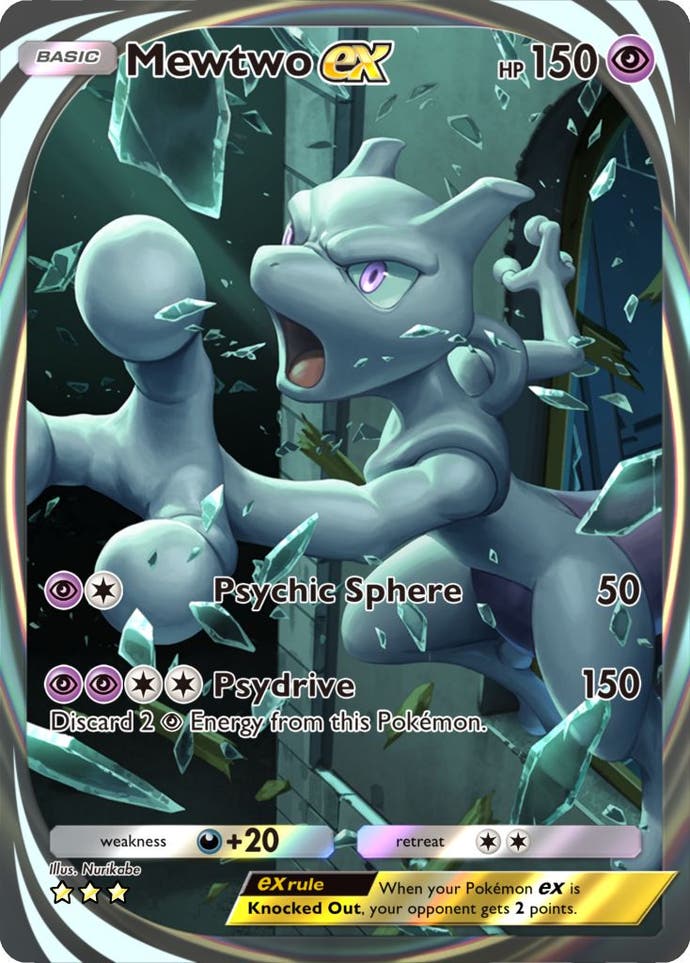
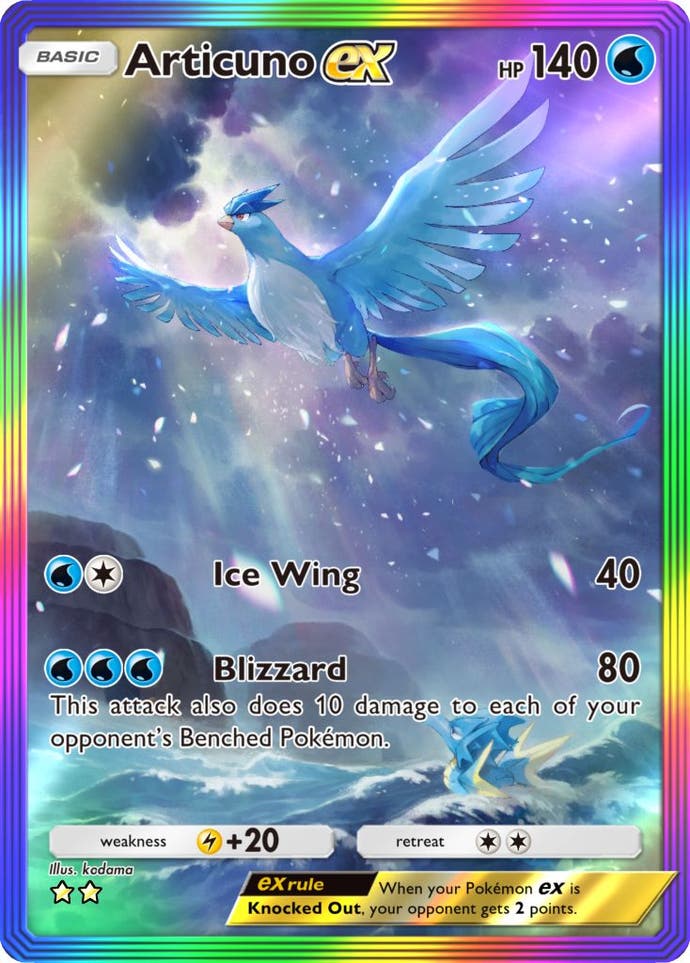
You’re probably wondering, what will I do with these TCG Pocket cards? I certainly can’t hide them at the back of a cupboard in my parent’s house in the desperate hope they’re never discovered so I have room for new cards in my own home. These cards are digital. Don’t worry, though – TCG Pocket rewards you for completing card collections. There’s XP to be gained from completing major feats – like obtaining the complete Genetic Apex set – but also from smaller themed collections, such as netting all the Kanto starters or the Eeveelutions. XP helps increase your TCG Pocket level – and once high enough, you’ll unlock something else to do with your collection: playing the Pokémon Trading Card Game itself.
TCG Pocket allows you to play the card game with both friends and randomly-selected opponents. Anyone who’s played the game before, though, will instantly notice this version has been streamlined to shorten matches. Energy Cards now auto-generate rather than being pulled from the deck, prize cards have been removed, and there’s a smaller deck size in general.
I didn’t have time to properly test out these matches as much as I’d have liked, but having played the Pokémon TCG competitively in the past, these new mechanics do appear to offer a good reworking of the game for mobile devices. The smaller deck size also means you can start crafting custom decks early on, especially since you don’t have to worry about including Energy Cards. While we’ll have to wait to see whether this new format is picked up by existing players, it definitely has the potential to bring new fans to the game. I wouldn’t be surprised if we see a TCG Pocket league at future Pokémon World Championship events similar to those for Pokémon Go and Unite.


There’s one inescapable truth about TCG Pocket though – it is free-to-play, and it wants your money. TCG Pocket wants your money so badly in fact, you’d think it’s been possessed by a Gimmighoul. Not only can you purchase items which reduce the Pack Stamina and Wonder Pick timers, but you can also purchase cosmetic items. We’re talking card folders, playmats and coins. Yes, you can buy a special virtual coin to flip during your TCG Pocket matches.
Selling these items is a fairer option than simply allowing players to purchase specific cards using real-world money – something which would allow players with deeper pockets to dominate in-game matches and remove the ‘Just like real life’ atmosphere the game is aiming for. But it’s also true that selling random booster packs will likely encourage spending over a longer period of time, as players hunt specific cards. After all, what’s the point of opening a booster pack, when you can just buy a Charizard? Sure, Pack Points can be redeemed for certain cards, but this is more of a gradual build up from dedicated play rather than a quick purchase.
Whenever I see cosmetic microtransactions like these, I wonder if they’re necessary and worry about how their presence affects players. There’s always an element of players feeling pressured to buy an item in case it vanishes forever and, as a long term MMO player, I’ve seen how people can easily get sucked into spending an awful lot of money. Still, you can’t have a free-to-play mobile game anymore without microtransactions, being covered in adverts or, worse, both. Instead, we simply have to hope the ones in TCG Pocket don’t become too egregious.

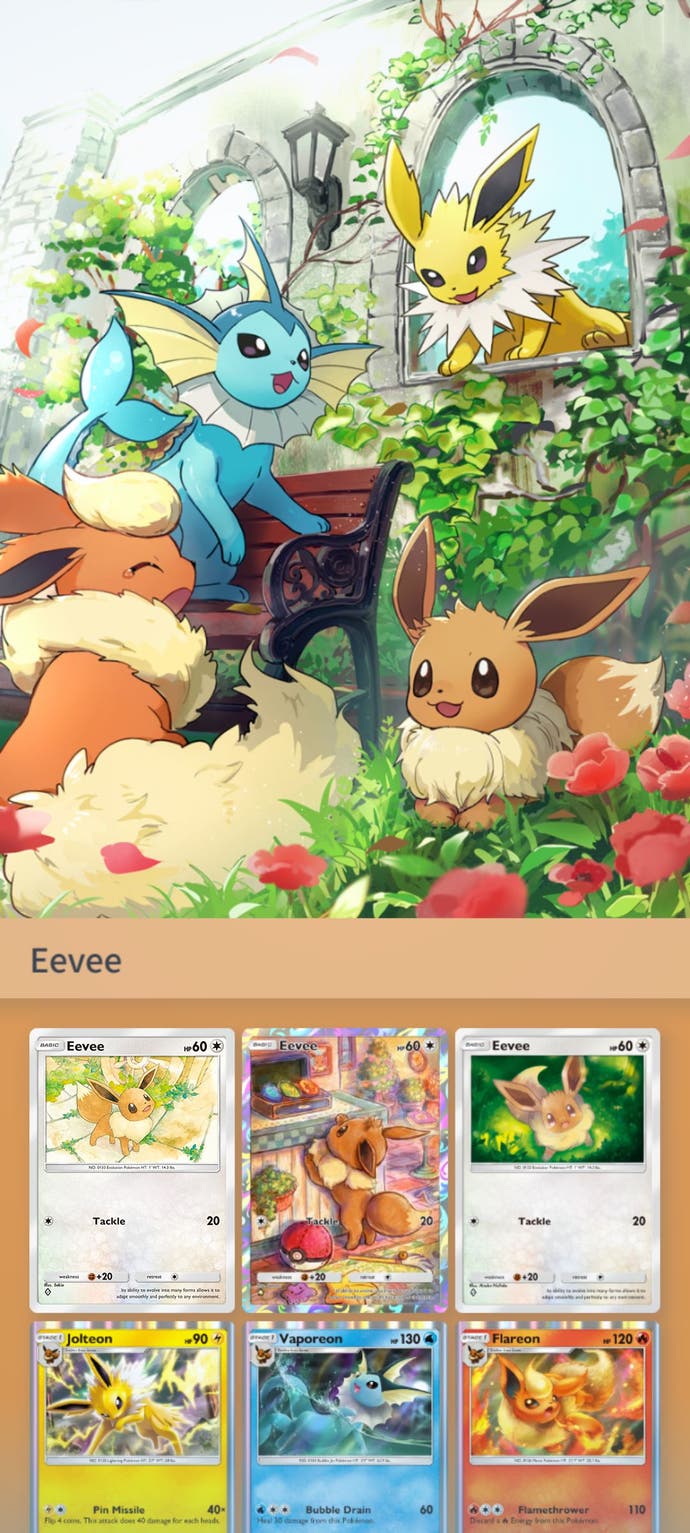
Microtransactions aside, TCG Pocket is shaping up to be a strong recreation of the Pokémon Trading Card Game. Its focus on card collecting shows a faithfulness to its roots, while appealing to the pack opening scene that’s so popular on YouTube and TikTok today. Thankfully, there is more to TCG Pocket than this, though – and reworking the card game demonstrates a readiness to adapt the formula for a new audience. Missions and limited-time events also offer another reason to play daily outside of opening packs. This seems likely to make TCG Pocket a fixture on any Pokémon fan’s phone – more like Pokémon Go, rather than vanishing into the ether like Magikarp Jump.